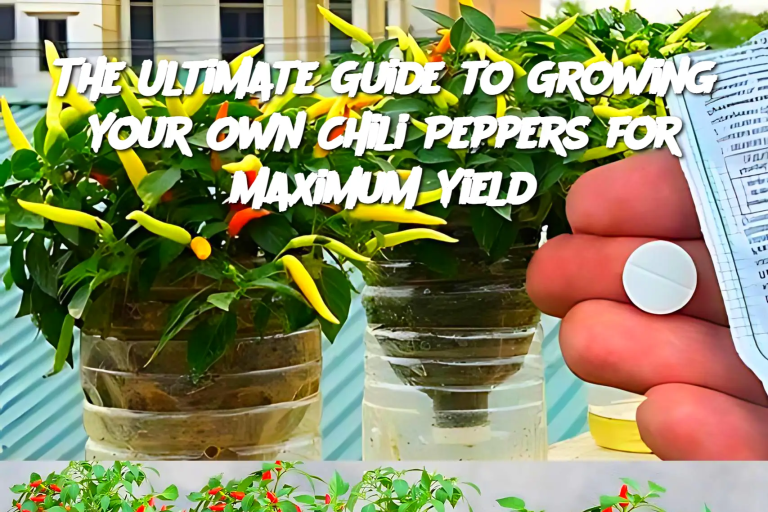ADVERTISEMENT
Introduction
Growing your own chili peppers is a rewarding experience that allows you to enjoy fresh, homegrown spice in your meals. Whether you're a beginner or an experienced gardener, providing the right conditions for your chili plants ensures vigorous growth, high yields, and intense flavors. This guide will take you through everything you need to know—from planting to harvesting—to help you cultivate the healthiest chili peppers possible.
Ingredients:
Chili pepper seeds of your choice (Jalapeño, Habanero, Cayenne, etc.)
Well-draining soil with organic compost
Seed trays or small pots
Large pots or a garden bed
Warm, sunny location (6–8 hours of direct sunlight per day)
Watering can or spray bottle
Fertilizer (balanced or low-nitrogen blend)
Mulch (straw, wood chips, or grass clippings)
Stakes or cages for support (for larger chili plants)
Instructions:
Selecting and Preparing Seeds
Choose high-quality seeds suited to your climate.
Soak the seeds in warm water for a few hours to speed up germination.
Germination and Early Growth
Fill seed trays with well-draining soil and plant the seeds ¼ inch deep.
Keep the soil moist but not soggy.
Maintain a temperature of 75–85°F (24–29°C) for optimal germination.
Expect seedlings to sprout within 7–14 days.
Transplanting and Spacing
Once seedlings have at least two sets of leaves, transplant them into larger pots or directly into the garden.
Space them at least 12–18 inches apart for proper air circulation.
Providing Optimal Growing Conditions
Ensure full sun exposure for at least 6–8 hours daily.
Use organic mulch to retain moisture and suppress weeds.
Keep the soil consistently moist, but avoid overwatering.
Feeding and Pruning
Apply a balanced fertilizer every 2–3 weeks.
Pinch off the first set of flowers to encourage stronger root and leaf development.
Prune excess leaves to improve airflow and reduce disease risks.
Pest and Disease Management
Watch for common pests like aphids and spider mites; use neem oil or insecticidal soap if needed.
Prevent fungal diseases by watering at the base of the plant and ensuring proper spacing.
Harvesting and Storage
Peppers are ready for harvest when they reach their full color and size.
Use scissors or pruning shears to avoid damaging the plant.
Store fresh peppers in the refrigerator or dry them for long-term use.
Serving and Storage Tips:
Store fresh chili peppers in a paper bag in the fridge for up to two weeks.
Dry chili peppers by hanging them in a well-ventilated area or using a dehydrator.
Freeze whole peppers in airtight bags for extended shelf life.
Blend dried chilies into powder or flakes for homemade seasoning.
Variations:
ADVERTISEMENT
